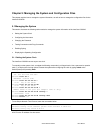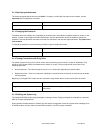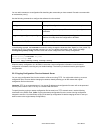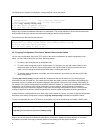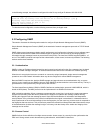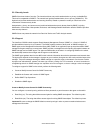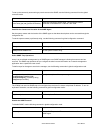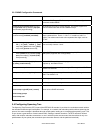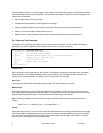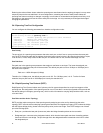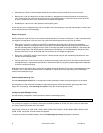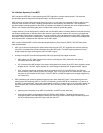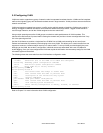
To set up the community access string to permit access to the SNMP, use the following command from the global
command mode.
Command Purpose
Snmp-server community string [view
view-name] {ro | rw} [access-list-number]
Define the community access string. The access-list-number
parameter is numbered from 1–99 and 1300–1999.
Establish the Contact and Location of the SNMP Agent
Set the system contact and the location of the SNMP agent so that these descriptions can be accessed through the
configuration file.
To set the system contact (sysContact) string, use the following command in global configuration command.
Command Purpose
Snmp-server contact text
Set the system contact string.
Snmp-server location text
Set the system location string.
Define SNMP Trap Operations
A trap is an unsolicited message sent by an SNMP agent to an SNMP manager indicating that some event has
occurred. The SNMP trap operations let you configure the switch to send information to a network management
application when a particular event occurs.
To define traps for the agent to send to the manager, use the following commands in global configuration mode.
Command Purpose
snmp-server host address
[traps|informs] [version {1|2c
[auth|noauth|priv]}] community-string
[udp-port port-number]
Specify the recipient of the trap message.
The IC36240 can send an SNMP trap to its configured trap receivers if it detects a duplicate IP address. To turn on
duplicate IP detection, use the following command in global configuration mode:
Command Purpose
duplicate-ip detect
Enable duplicate IP detection.
Disable the SNMP Protocol
To disable SNMP, use the following command in global configuration mode:
Command Purpose
no snmp-server
Disable SNMP operation. This command disables all versions of the
SNMP agent.
45 Asante IntraCore IC36240 User’s Manual



